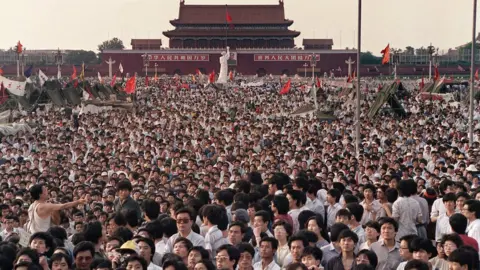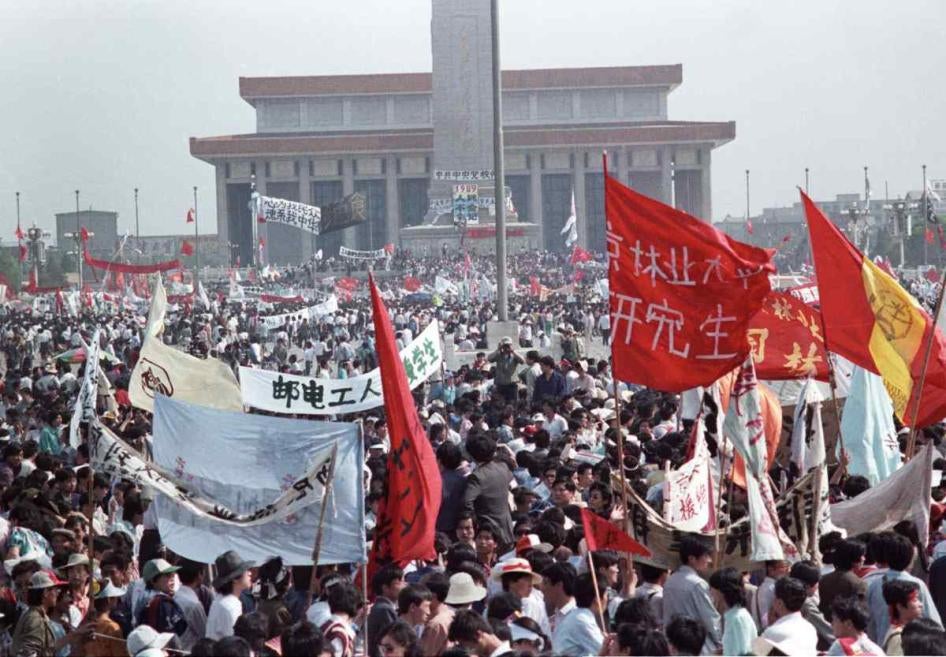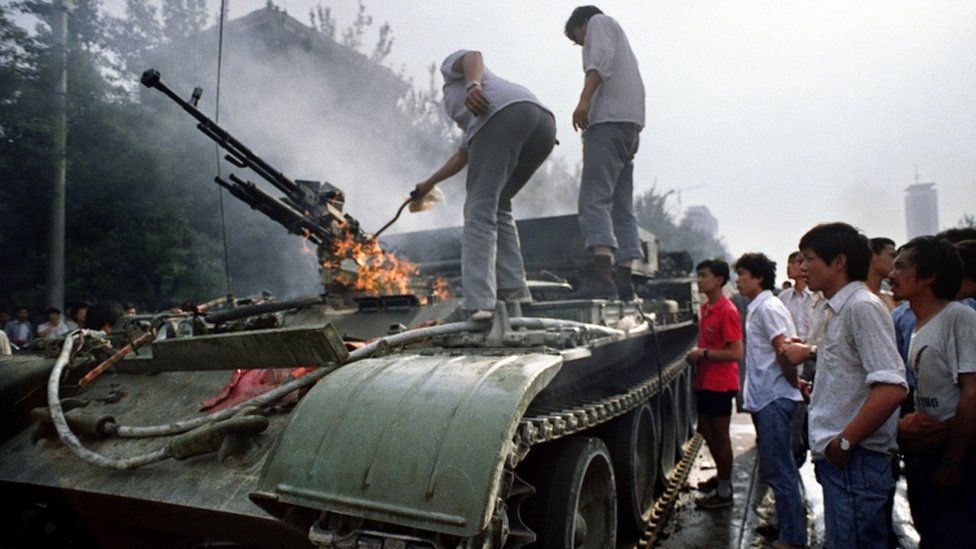
The spring of 1989 saw the largest pro-democracy demonstration in the history of China’s communist regime. The following timeline tracks how the protests began in April among university students in Beijing, spread across the nation, and ended on June 4 with a final deadly assault by an estimated force of 300,000 soldiers from People’s Liberation Army (PLA).

April 17: Tens of thousands of university students begin gathering spontaneously in Tiananmen Square, Beijing, the nation’s symbolic central space. They come to mourn the death of Hu Yoabang, former General Secretary of the Communist Party.
April 18–21: Demonstrations escalate in Beijing and spread to other cities and universities. Workers and officials join in with complaints about inflation, salaries and housing. Party leaders fear the demonstrations might lead to chaos and rebellion.
April 22: More than 100,000 university students assemble outside the Great Hall of the People, where Hu’s memorial service is being held. Three students carry a petition of demands up the steps of the Great Hall and insist on meeting Li Peng; he does not respond. Over the next few days, the students boycott classes and organize into unofficial student unions — an illegal act in China.
April 25: With Zhao Ziyang on a state visit to North Korea, Li Peng calls a meeting of the Politburo, a meeting dominated by Party members antagonistic to the students. They convince Party elder Deng Xiaoping, the de facto head of state, that the students aim to overthrow him and the Communist Party.
April 26: “The Necessity for a Clear Stand Against Turmoil,” appears in the state-run newspaper, the People’s Daily. This editorial closely follows the opinions expressed by Deng at the meeting the day before.
April 27: The editorial sets off more demonstrations in other cities. In Tiananmen Square the ranks of protestors now include a cross-section of society.
April 29–May 3: Party leaders are aware of the growing foreign press coverage of the demonstrations, but remain split over how to stop the protests and get the students to return to classes. Zhao Ziyang’s camp advocates negotiation and stresses that the government should address legitimate complaints, such as the need for political reform. Li Peng and his allies argue that social stability must be restored before any reforms can be considered.

May 4: Tens of thousands of students march into Tiananmen Square to commemorate the 70th anniversary of the 1919 “May Fourth Movement,” which also took place in the square. They pledge to return to classes the next day but intend to keep pressing for reforms.
May 5-12: As students return to their classes, the movement lacks leadership. Certain factions are contemplating a hunger strike. Meanwhile, conflicts arise within the Party as they prepare for Soviet Party Secretary Mikhail Gorbachev’s historic visit to Beijing.
May 13: Anticipating Soviet Party Secretary Mikhail Gorbachev’s visit, about 160 students began a hunger strike in Tiananmen Square, citing the government’s failure to respond to their requests for dialogue.
May 16: More than 3,000 people are now participating in the hunger strike.

The protesters were peacefully calling for political and economic reform. However, Chinese authorities responded with overwhelming force to repress the demonstrations. Military units were brought in and unarmed protesters and onlookers were killed en masse.

On June 4th, 1989, the Government of the People's Republic of China (PRC) sent tanks into Tiananmen Square to brutally repress peaceful Chinese pro-democracy protesters and bystanders alike. The victims' bravery will not be forgotten and continues to inspire advocates for these principles around the world.
The spring of 1989 saw the largest pro-democracy demonstration in the history of China’s communist regime. The following timeline tracks how the protests began in April among university students in Beijing, spread across the nation, and ended on June 4 with a final deadly assault by an estimated force of 300,000 soldiers from People’s Liberation Army (PLA).